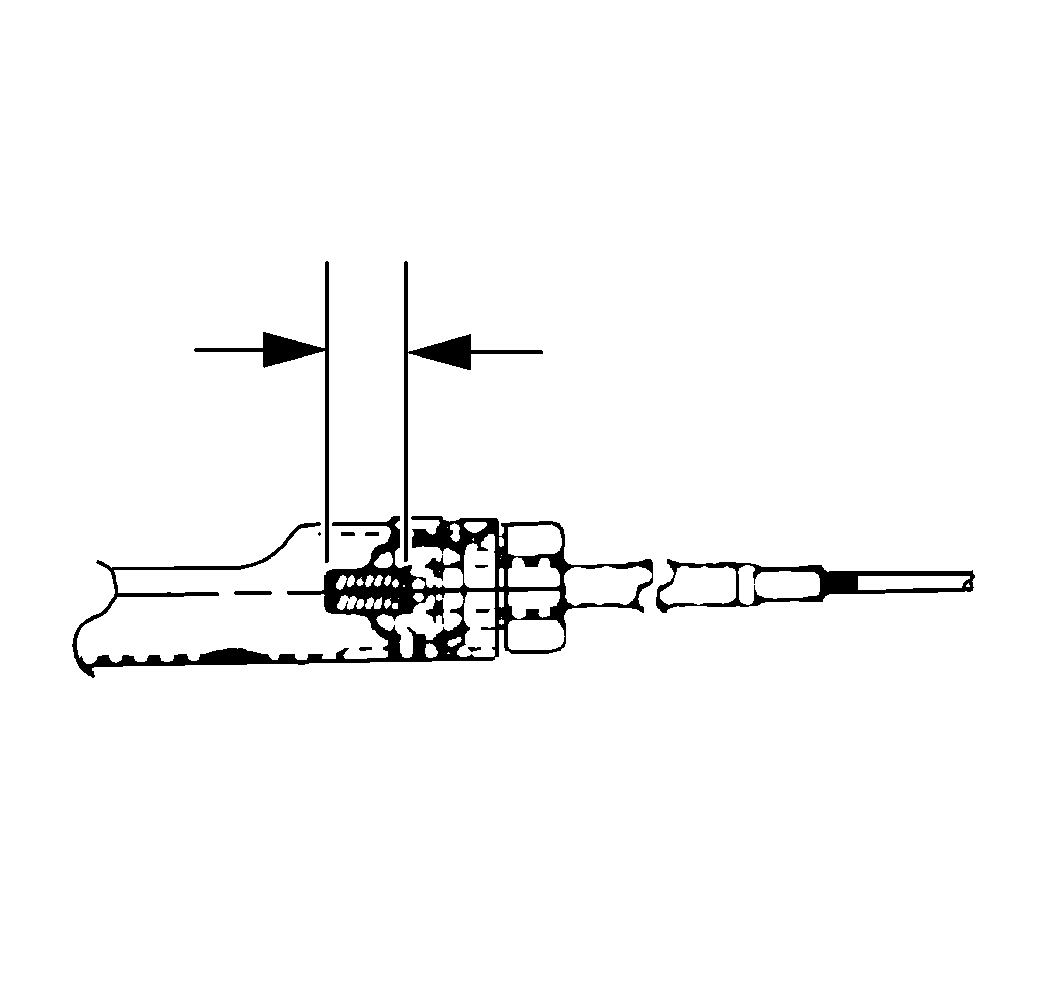The pedal must be free from corrosion and lubricated for
correct operation. The pedal must be returned to the released position without
sticking or binding. If a problem is present, check the cable routing
for binding or misadjusted cables.
The cable tension is self adjusting. However, during normal brake lining
wear, it is possible that the cable tension may need adjustment due to the
increased pedal travel. If the park brake requires adjustment, check
for the following conditions:
| • | Inspect the rear brake shoe for wear. The rear brake shoe thickness
should not be more than 80 percent worn (approximately). |
| • | Make sure the system is free from corrosion and free from sticking
or binding. |
Adjustment Procedure
Important: To prevent damage to the threaded adjusting rod when servicing the park
brake, perform the following procedure:
| • | Before attempting to turn the adjusting nut, clean the exposed
threads on each side of the nut. |
| • | Lubricate the threads of the adjusting rod before turning the
nut. |
- Block the front wheels.
- Raise and support the rear axle with safety stands.
- Place the park brake pedal to the FULL up position.

- Measure the threads on
the equalizer. Adjust the threads to the following specifications:
| • | Passenger/Cargo to 13 mm (0.511 in) |
| • | Cutaway/Upfitters to 21 mm (0.826 in) |
- Verify that the vehicle will hold position with the park brake
pedal depressed.
- If additional adjustments need to be made, rotate the adjuster
nut using 5 mm (0.196 in) increments until the rear wheels obtain
a moderate drag.
- Back off the adjuster nut until the rear wheels are free from
drag.
- Verify that the vehicle will hold position with the park brake
pedal depressed.
- Remove the safety stands. Lower the vehicle.
- Unblock the front wheels.

